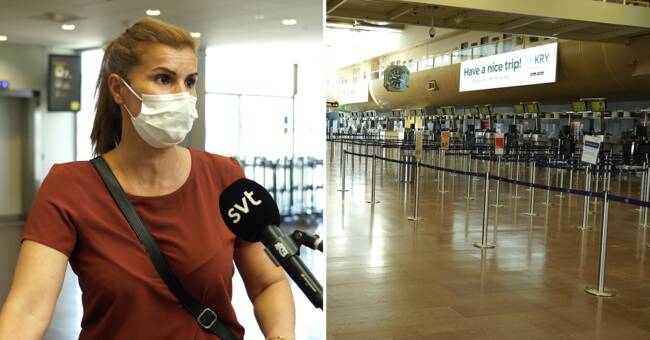Several European airlines have started resuming traffic and increasing the number of destinations. But that is still only a fraction of what air traffic looked like before the corona pandemic.
In July, passenger volumes were at a historically low level and compared to last year, the number of passengers decreased by 3.3 million, according to a press release from Swedavia, which operates the largest Swedish airports.
Reduced by over 85 percentAt Sweden's largest airport Arlanda, travel decreased by 87 percent, to 316,003, in July compared with last year. At Landvetter in Gothenburg, almost 72,000 passengers flew during the month, a drop of 90 percent.
How long is this situation really sustainable?
"Even if we start to see a lightening and that it will hopefully last, it is a challenging situation for us. We entered the crisis with a good financial position and took a number of measures early on to reduce our costs and adapt the business to a minimum ", writes Robert Pletzin, press manager at Swedavia, in an email to SVT News.
Swedavia has also laid off 800 employees and according to Pletzin fears that many of them will have to quit.
"Careful recovery"Swedavia predicts a cautious recovery during the autumn, but Robert Pletzin expects that both 2020 and 2021 will be strongly affected by the corona crisis.
And the question is if and when people will fly like we did before the pandemic again.
“The will and need to meet, globalization and increased economic prosperity remain as fundamental factors for the growth of aviation in the long term. But it will probably take several years before we return to the levels we saw before the crisis. The aviation industry's co-operation organization ACI expects that this will happen sometime around 2024. But the question we and many are also asking is what the new normal is for aviation and it remains to be seen, ”writes Robert Pletzin.

